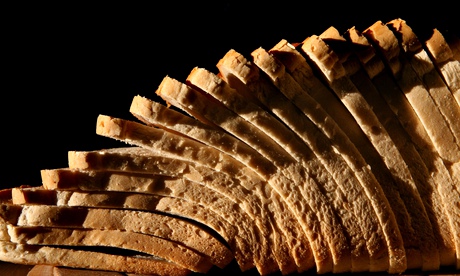
In supermarkets the gluten-free aisles are expanding while the consumption of wheat in developed economies takes a nose dive. What’s going on?
Less than 1% of the population actually suffers from coeliac disease – a serious autoimmune genetic illness characterizsed by gluten intolerance – , but many more have “gluten anxiety”. This is when a wide range of symptoms are ascribed to gluten – wheat’s main protein. There’s no medical evidence that going gluten-free brings health benefits.
But does it deliver environmentally? There’s some eco justification. Wheat (one of the main ways we consume gluten) is a poster crop for the so-called Green Revolution of the 1970s (a misnomer given that it describes industrialised agriculture, dependent on pesticides and fertiliser). So if your diet is predicated on wheat, it’s indirectly a diet rich in oil (the basis of chemical pesticides). It’s also a thirsty diet: Saudi Arabia, once self-sufficient in wheat, is now phasing it out completely. The underground aquifer that watered its wheat crop is all but empty.
The eco logic for cutting out bread is tasty, too. Researchers have calculated that white medium-sliced bread has a carbon footprint of 1,244g of CO2 equivalent per loaf. Even a worthy-looking wholemeal thick-sliced loaf (incidentally containing more gluten than the white loaf) has a footprint of 977g per CO2.
It would be so neat if we could find a diet that solved our health problems and environmental crisis at the same time. But after years of surveying farms, Dan Barber, author of The Third Plate: Field Notes on the Future of Food, warns that we need more substantive change: “Our belief that we can create a sustainable diet for ourselves by cherry-picking great ingredients is wrong… We need to think about redesigning the system.”
Bread is a really good example. The Real Bread Campaign is just one organisation railing against the Chorleywood Bread Process – the industrialised system that replaces simple ingredients, time, elbow grease and DIY baking with chemical additives and a mechanised process that turns out loaves in minutes, not hours. According to Real Bread-ers, Chorleywood loaves haven’t been given time for grain sugars and starches to be turned into forms we can properly digest.
So, rather than giving up bread, the real-bread movement suggests you eat the old-fashioned stuff – supporting artisan bakeries or baking your own. This would, they argue, help restore the natural processes of baking underpinned by better ingredients (including milled flours from different sources, not just a commercial wheat from a monocrop). In short, rather than ruling out gluten, they want you to use your loaf.
Green crush: Silo, zero-waste restaurant, bakery and coffee house
Silo in Brighton operates a pre-industrial food system with zero waste. A restaurant, bakery and coffee house, it’s all about real food and minimum processing. (And it’s the perfect place to try bread made from heritage wheat that’s the antithesis of the Chorleywood process – see above.) Here they mill flour, brew vinegar, season with seaweed, grow their own mushrooms and cure their own meat. Chef Doug McMaster has designed the whole place “from back to front, always with a bin in mind”. Except there is no bin – just a brilliant in-house composter. There are plenty of restaurateurs toying with sustainability, but few are as committed as McMaster, who first tried out his zero-waste idea at Wasted, a pop-up in Australia (silobrighton.com)
Greenspeak: Home microbiome {hoem maikro-byoam} noun
Every home has one – a micro-environment full of millions of shared bacteria. Rather than trying to wipe them out with antibacterial preparations, start appreciating them as part of the family.
If you have an ethical dilemma, email Lucy at lucy.siegle@observer.co.uk

